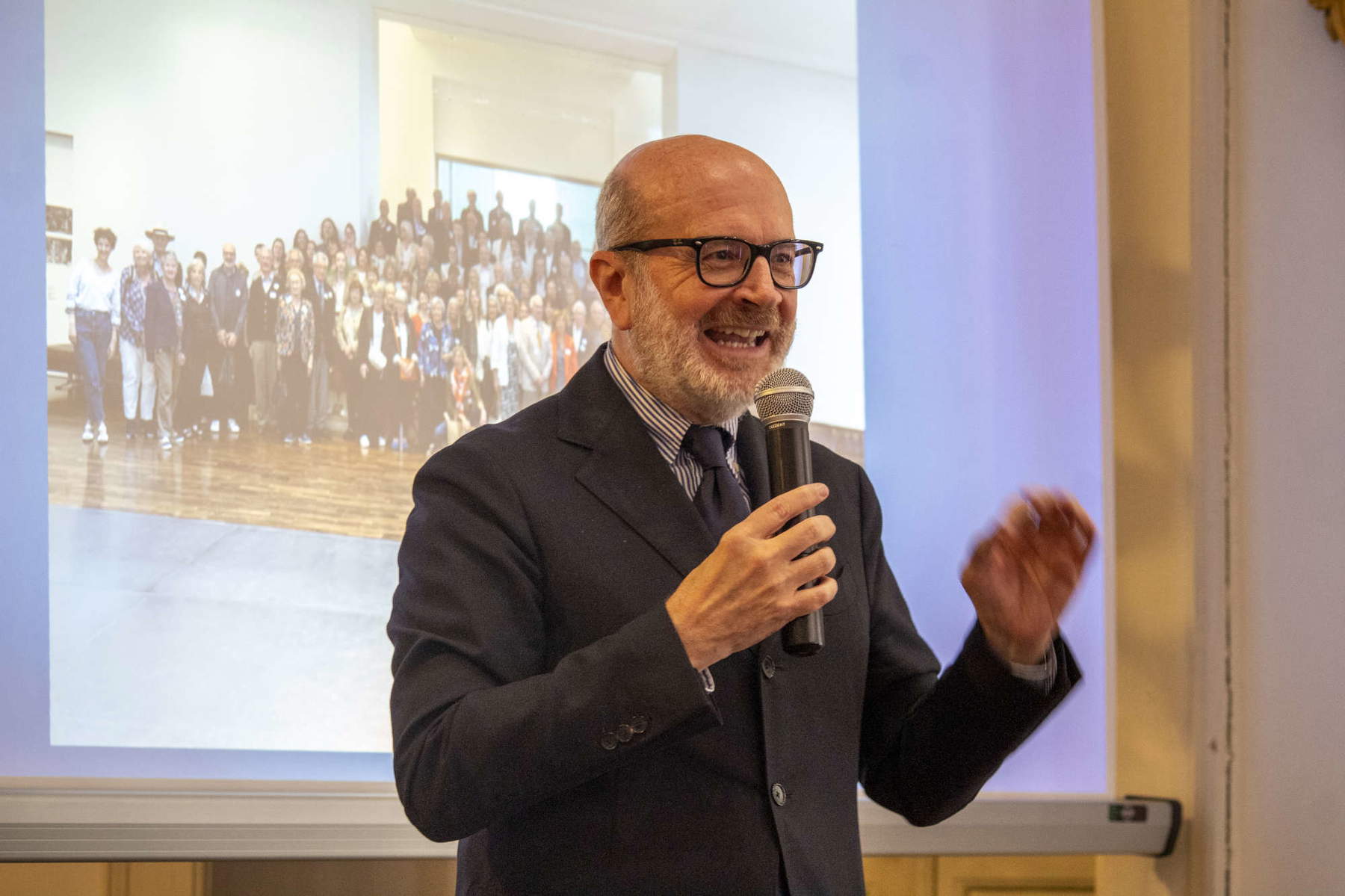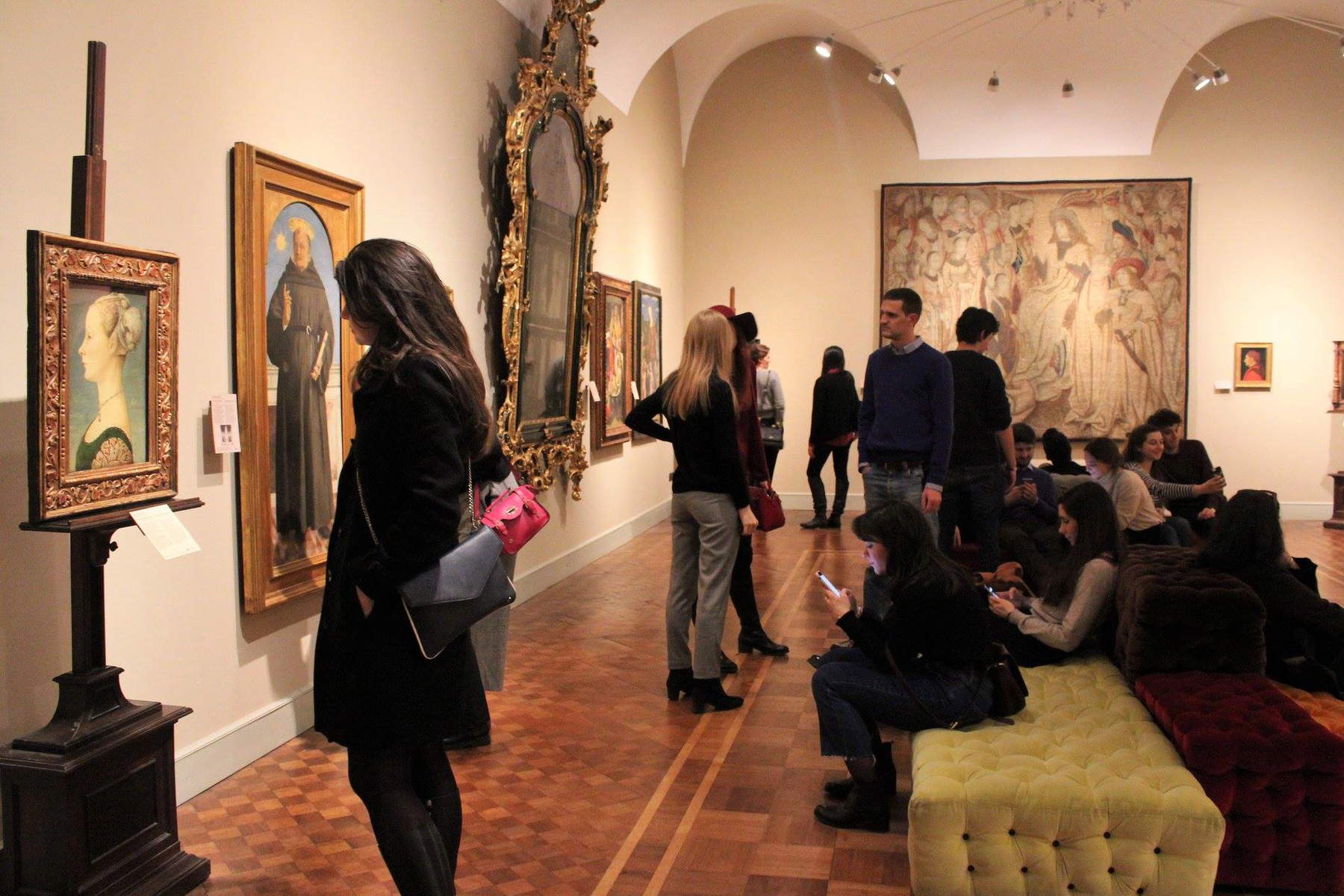Museums in Italy would not be the same if there were not the associations of “Friends of Museums”: enthusiasts, patrons, donors, lovers of the arts and letters who, thanks to their contribution, financial or even intellectual, guarantee an important support to Italian museums, which is substantiated in many activities that are also very different from each other. There are dozens of associations of friends of museums in Italy, and they are united in a federation, Fidam - Federazione Italiana degli Amici dei Musei, founded in Florence in 1975. We interviewed its president, Italo Scaietta, to let him tell us about this not-so-well-known but fundamental way of life for museums.

NC. What is the main goal of Fidam?
IS. The representation of Friends of Museums in Italy is entrusted to the federative body Fidam (Italian Federation of Friends of Museums), which brings together all the different associations of Friends of Museums in our country. Italy, with its cultural diversity stretching from the Alps to the islands, also reflects diversity in the associations, people and activities involved. Fidam’s goal is therefore to unify and coordinate the presence of these volunteers in Italy, and to represent their commitment, excellence and the great cultural value they bring, before institutions.
How does the federation contribute to the enhancement and preservation of cultural and artistic heritage?
The Federation, representing the volunteer movement related to museums, stresses the importance of this commitment in a complex economic, social, cultural and political context. Italy, which guards one of the most significant artistic and historical heritages in Europe, must necessarily call on the contribution of volunteers. For Fidam, these people are today one of the most important tools for handing down our heritage to future generations. They play a crucial role in the enhancement, preservation and transmission of what we have inherited, and in this way young people can also appreciate and cherish the riches of our territory.
Fidam is also involved in fostering cultural and social exchanges between associations. In what ways does this connection take place? Do the associations enter into relationships with each other?
Typical activities of Friends of Museums include specific initiatives such as cultural trips. The trips, aimed at an audience with a fine palate for art and culture, allow them to explore places such as museums, historic houses, mansions, churches and palaces, all fundamental elements of our Italian artistic heritage. Each association, well rooted in its local area, makes itself available to welcome and guide members of other associations visiting that area, fostering a very intense cultural exchange. In addition, Fidam has the task of supporting the study and comparison between associations, promoting the development of particularly innovative projects. Associations can share their experiences and reflect on how they have faced and solved problems. They can find solutions that are useful, innovative and appropriate for contemporary times.
How do associations respond to and contribute to the enhancement of Italy’s cultural and artistic heritage?
Most Friends of Museums associations are still in a traditional segment, focusing on bringing people closer to culture. The associations play a fundamental role in putting the public in continuous contact with the world of cultural heritage, art and history. In this sense, they show great sensitivity. However, it is also important to consider the aspect of institutional patronage. The work carried out by associations, thanks to the contributions of their members, often leads to significant economic results, and these funds are frequently allocated to projects that support the association’s museum of reference, or to specific initiatives in the area to which they belong, and these projects may include restorations and donations. Some associations in Italy have evolved further, expanding their scope. Some have restored properties by obtaining them in concession and managing them independently, while others manage assets not owned by them, making them accessible to the public when they would otherwise have remained closed and inaccessible. There are various formulas by which Friends of Museums contribute to the preservation and enhancement of artistic and cultural heritage.
In your opinion, what improvements have you been able to notice in recent years in the participation of young people in cultural volunteering and what initiatives might have contributed most to this increase?
For us today, young people represent a significant challenge, especially in Italy. Many of them have yet to complete their education and enter the world of work; this makes it difficult to ensure continuity in their engagement. While it is rather easy to engage young people in individual events, what we are really interested in is promoting a lifelong volunteer training path. To meet this challenge, we formed the Young Friends of Museums of Italy, an association affiliated with the Italian Federation of Friends of Museums. The group aims to involve young people from the various federated associations, creating a dynamic network. In addition, we are working on the aspect of internationality, also trying to economically support international youth exchanges.

Are there any projects instead that you have in mind or would like to pursue in order to strengthen the network of associations and increase the participation of young people in both artistic and cultural volunteering?
We are planning, on October 13, the Second European Day of Friends of Museums, an initiative born within FIDAM 21 years ago and recently extended to other member state federations under my vice presidency of the World Federation. A first expansion of the Day’s boundaries took place as early as 2022, in 2023 an official document was signed by the various National Federations establishing the European Day of Friends of Museum that saw already in that year a significant involvement of Federations and Associations until this 2024 edition to which five European countries have joined, which, on October 13, will organize through their associations events in museums, art heritages and other places of cultural interest. The initiative aims to demonstrate the ability to create a valuable network, which we want to further enhance by obtaining funding to support other projects, primarily those involving young people. The purpose of communication is clear: we are all volunteers, regardless of national affiliation, united by the desire to contribute to artistic and cultural heritage. Our message is one of great fraternity, extended not only at the European level but also within the World Federation of Friends of Museums. To further strengthen the network, we are launching a new digital magazine, distributed free of charge to all association members. The magazine will have a section edited by a high-profile scientific committee (Giuseppe Barbera, Paola Marini, Stefano Zuffi, and our former FIDAM Board members Stefano Bruni and Ulisse Tramonti), which will convey information, news and reflections of the federation, representing Friends of Museums at the national level. Another part of the magazine, however, will be devoted to giving voice to the associations, which will be able to present their projects and communicate their initiatives.
Are there any upcoming summer events that the federation is organizing that would be of interest to Fidam members and the public interested in museums?
During the year, we organize webinars where we meet with curators of particularly important exhibitions who talk to us about the scientific content, their work in organizing those particular exhibitions. The meetings, which will continue in the coming months, are aimed exclusively at the associations and members of our federation. The first event open to the public will be the European Friends of Museums Day on October 13. Although local associations organize numerous events throughout the year in their respective areas, we as a federation focus on wide-ranging initiatives. For example, four years ago, the Friends of Palazzo Te and Mantovani Museums in Mantua created an event called Festa di Piazze. The event arose from reflecting on the fact that many of the historic squares within the UNESCO perimeter of Mantua are used primarily as parking lots. With a vision of a city of the future, where there are fewer cars and more people, and in collaboration with the City of Mantua, we decided to transform the squares every 15 days, for a total of four events. During the Festival of Squares, the squares are emptied of vehicles and transformed into cultural spaces. A stage is set up with 200 chairs and, through music, theater and dance, we show what that square can be without motor vehicles. The event is dedicated to the revaluation of squares that are less frequented by tourists but well known to citizens, who rarely see them in this condition.
A few years ago Uffizi director Eike Schmidt pointed out that 40 percent of Florentines have never visited the Uffizi. In this case, according to the director, the Friends of the Museums should have found initiatives to bring visitors to the space in the months with fewer visitors. Have any interventions been made in this regard in recent years? What situations have changed from your statement to today?
First of all, I would like to point out that the Friends of the Uffizi are a membership, not a stewardship, and they are primarily concerned with restoration. The Uffizi does not have a Friends of the Museums association as we understand it; they follow a model closer to the North American model, perhaps even the German model, where membership has more relevance than stewardship. Our work is very different. Associations like the Friends of the Uffizi manage to raise significant amounts of money. Instead, our goal is to bring people closer to the world of art and culture on a daily basis. For this reason, we manage to enhance and open even closed museums, because people are the heart of our associations. Associating means bringing people closer, uniting.
What are the future plans for the federation?
Fidam has two main goals for the future. The first is to increase the presence of associations within the federation. The second goal is to support the growth of existing associations. Many associations were born out of shared ideas in small groups, often in informal settings such as a home, and through collective efforts have been able to implement specific projects. It is important that they employ professionals to handle the administrative and legal aspects. The Federation is committed to supporting associations by providing support and advice to governing boards, presidents, and all those who manage cultural associations, which clearly operate in a nonprofit context. A significant development here has been the introduction of the Single Third Sector Registry, which has enabled many associations to make a leap forward. Adapting to this registry, by amending statutes and complying with new regulations, was an important step. Our task at this time is to continue to assist associations on this path of growth so that they can operate even more efficiently and professionally.
Warning: the translation into English of the original Italian article was created using automatic tools. We undertake to review all articles, but we do not guarantee the total absence of inaccuracies in the translation due to the program. You can find the original by clicking on the ITA button. If you find any mistake,please contact us.